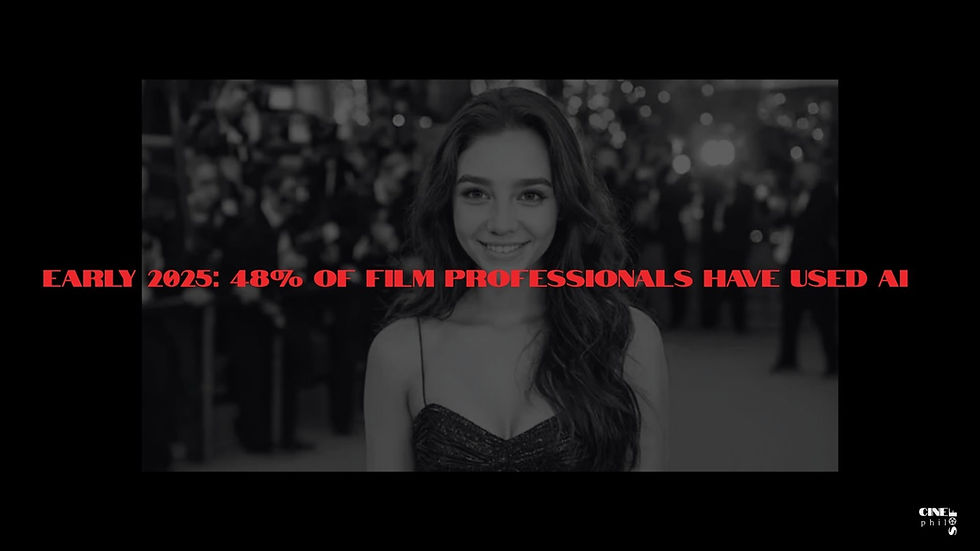Bridgerton Summer Success-Context, Culture & Complexities
- Sofia R. Willcox

- May 29, 2024
- 3 min read
"Bridgerton (2020-)” is back this spring-summer, already making a buzz and dominating Netflix everywhere. Let’s decode its success formula.
Historical and Genre Context
The story is set between 1813 and 1827, which was part of what is known as the Regency era (1811-1820). Notable for its mise-en-scène elements and aesthetics. There are literary references to its famous icon, Jane Austen, with “Pride and Prejudice,” “Sense and Sensibility,” “Emma,” and “Persuasion.”
Genre-wise, Bridgerton is a blend of costume drama and heritage. The former emphasizes the clothes and settings from a period, offering escapist melodrama with resolutions aimed at female audiences. The latter celebrates the past with a nostalgic aftertaste, noticed in the lighting and setting, depicting a countryside uncorrupted by industrialism and dominated by bourgeois narratives, even though the series interrogates the past and some of its socio-political issues instead of making up.
Bridgerton's stories glamorize Britain and mythologize their settings, socio-politically. They contribute to a positive image that allures viewers abroad and ensures success in international markets. Tourism moves the country forward, as well as the cradle of capitalism, offering the most diverse merchandise revolving around the series universe. Since Brexit, the United Kingdom has become unpopular, from bad to worse with inflation.
Cultural Impact and Popularity
The appeal of Bridgerton goes beyond the omnipresent narrator, Lady Whistledown, whose voice is provided by the national treasure, Julie Andrews. This technique is reminiscent of previous successful series like Gossip Girl (2007-2012) and Pretty Little Liars (2010-2017). Not only is Shonda Rhimes, the name behind the production, also responsible for other successes like Grey’s Anatomy (2005-) and Scandal (2012-2018), as well as Julia Quinn who is the creative mind behind the story, as the author of the best-seller with the same name which inspired the Netflix series. The soundtrack that transforms contemporary pop music in the Regency-based classic music.
The show also benefits from its diversity, bringing colour to the British elite with characters from varied backgrounds, socially and geographically.
Beyond that, there are obvious moments like Eloise’s frequent commentaries on the female role in this society and her desire for independence, Benedict’s deviance with artistic interests and sensitivity in contrast to Anthony’s toxic masculinity, Kate’s struggles with ageism and societal pressures on marriage, and Penelope’s suffering from fatphobia.
Subtle themes include the female gaze within Daphne's story in the first season, aligning with her arc on female pleasure. Empowered women with their available tools with Francesca Bridgerton communicating through music, Violet Bridgerton with embroidery, Lady Danbury taking advantage of her influence in society to play a chess with them, and Lady Featherington’s strategies. The female characters wearing colours that match their house wallpapers highlight the women's roles as invisible and confined to domestic settings in the Regency era.
These themes are interesting in a period drama, as they remain relevant today. However, behind this facade, there are controversies.
Controversies
Regé Jean Page, Ruby Barker, Charithra Chandran, and Simone Ashley have mentioned experiencing racist incidents behind the scenes, which led them to leave the series. Bridgerton attempts to include everyone in the British elite, making a historical reparation. However, the issue lies in the inclusion of marginalized groups in high society while erasing their contributions in history and culture offscreen, which can be seen as a form of oppression and whitewashing. Despite some Indian elements in the second season, it is not enough. Additionally, this inclusion is selective, with many characters in secondary roles, queercoding, the exclusion of LGBT+ sex scenes and stereotypical Frenchwoman portrayal.
The cuts also affect Penelope’s storyline, which relies on a PG version for a conservative audience. This reinforces fatphobic values by portraying fat women as less sexually attractive or desirable. Fat women are often covered in sheets or relegated to secondary roles as lonely sidekicks, comic reliefs, or jokes, akin to the "DUFF" stereotype.
It’s worth remembering that many of these groups were in the shadows of society, as subtly noted in Eloise’s storyline with Theo in the second season. The working-class setting is even darker and more sombre, populated by workers, the disabled, and early feminists, in stark contrast to the elite.
Let's wait for the second part of the third season in two weeks and the upcoming ones!




Comments